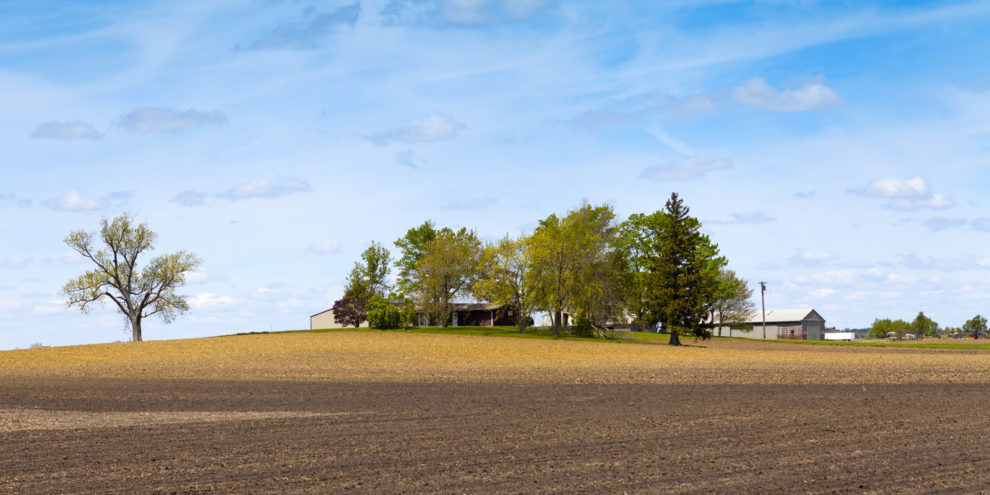Taxpayers considering selling their farm or ranch with a primary residence can utilize both Section 121 and Section 1031 to exclude and defer capital gain taxes. Section 121 applies to the primary home while Section 1031 applies to the land and out buildings. This is also known as a mixed use property where a portion of the property is a personal residence and the acreage is held in the productive use of a business or for investment.
Section 121
Internal Revenue Code Section 121 provides the taxpayer with a $250,000 for individuals and $500,000 for married filing jointly exclusion on the gain from the sale of their primary residence given the property has been owned and used as the taxpayer’s primary residence for two years or more. The exclusion is available once every two years. If the home is owned for less than two years, a prorated exclusion may be taken should the taxpayer sell due to health, a change in place of employment or unforeseen circumstances as provided in the Section 121 regulation.
The exclusion is better than a 1031 exchange because no tax is due when the gain from the sale is less than the $250,000/$500,000 exclusion. For example, a primary home is purchased for $150,000 and is sold three years later for $225,000 with $80,000 remaining debt. Improvements were made for $15,000. With selling expenses of $12,000, the realized gain of $48,000 and net equity of $133,000 are free and clear of any tax obligation given the gain is less the available exclusion.
Section 1031
Internal Revenue Code Section 1031 states that “no gain or loss shall be recognized on the exchange of property held for productive use in trade or business, or for investment, if such property is exchange solely for property of like kind which is to be held for productive use in trade or business or for investment.” No gain or loss is recognized, meaning the tax is deferred or postponed until the replacement property is sold. Property means real and personal property while held implies a two year hold. Real property is land, oil and gas royalties, buildings, fixed irrigation, rental and commercial properties.
For example, 100 acres of farmland was bought for $150,000 or $1,500 an acre, held for three years, then sold for $200,000 with selling expenses of $10,000. The Indiana state capital gains tax is 3.4 percent. Depending upon the modified adjusted income (MAGI) of the taxpayer, the federal capital gains tax for a married couple filing jointly with a MAGI of between $72,500 and $250,000 is 15 percent. The tax due is $7,360 unless a 1031 exchange is initiated and real property of $190,000 or more is acquired within 180 calendar days of the sale.

Mixed Use Outcome
Combining the two examples shows what happens when a farm or ranch is sold with a primary residence. The replacement property can a have a primary residence or rental property along with land acquired for $190,000 or more. The sale of the old property can be on one Purchase and Sale Agreement (PSA) with two settlement statements. The taxpayer can receive cash from the sale of the primary residence while the exchange funds from the sale of the farmland are wired to an escrow account created by the Qualified Intermediary accommodating the 1031 exchange. One PSA can be used to acquire the primary residence and farmland replacement property given the two are acquired from the same Seller. Once again, two settlement statements are suggested for the closing.
Another option is use the exchange proceeds towards making improvements on the land, such as pole barns and corrals, given there are exchange proceeds left over from the purchase.
To learn what farmers and ranchers should know about 1031 tax deferred exchanges, download the free ten page eBook on “1031 Exchange Benefits for Farmers and Ranchers” by clicking on the button below, or contact our office for a free consultation.
If you found this article insightful, please give it a thumbs up on the Facebook or LinkedIn icons above or retweet or email to your friends, colleagues, CPA, accountant, realtor and real estate attorney. If you have a question, ask and anticipate a response within twelve hours or less. Your input really matters!
This content may not be used or reproduced in any manner whatsoever, in part or in whole, without written permission of LANDTHINK. Use of this content without permission is a violation of federal copyright law. The articles, posts, comments, opinions and information provided by LANDTHINK are for informational and research purposes only and DOES NOT substitute or coincide with the advice of an attorney, accountant, real estate broker or any other licensed real estate professional. LANDTHINK strongly advises visitors and readers to seek their own professional guidance and advice related to buying, investing in or selling real estate.










Can a combined settlement (per example) be done in reverse? Can the settlement funds from an exchange be divided into a farm with a residence?